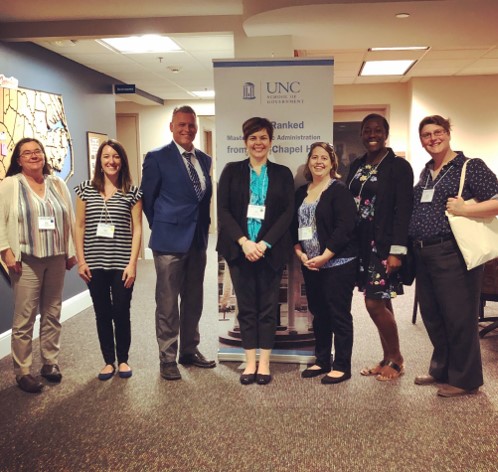Connect to protect: Guilford County officials working across disciplines to safeguard vulnerable adults
Abuse of vulnerable adults has long been a silent, under-addressed problem across the nation, and North Carolina is no exception. As the population of elderly adults in the United States continues to surge, public officials are grappling with how to combat the growing problem of elder abuse.
One community in North Carolina is taking action and harnessing the breadth of knowledge and talent among its own to do so. Growing out of the Guilford County Family Justice Center and the Department of Health and Human Service’s (DHHS) Adult Protective Services division, officials from across the county—hailing from many different sectors of government and business—have established a multidisciplinary team (MDT) to address and ultimately reduce the rate of abuse against adults in their community.
The MDT is bound under a common mission—to protect older adults from abuse and stop the perpetrators of said abuse—but their paths to joining the team originate from a wide array of professions. They include including social workers, law enforcement officers, district attorneys, clerks of court, emergency services providers, and more.
Guilford County launched its MDT in 2015 when the Family Justice Center was established. In 2019, Guilford’s MDT members participated in the inaugural elder abuse MDT workshop provided by the School of Government’s Adult Protection Network (APN). Through the collaboration of a multidisciplinary team, including Dean Aimee Wall, faculty members Meredith Smith and Margaret Henderson, and Network Director Kristy Preston, the School launched this virtual resource to connect, inform, and support MDTs working to combat the abuse, neglect, and exploitation of vulnerable adults.
In its origin, the Guilford County MDT had few comparative benchmarks to look toward for success. The School’s APN learned from the county and other communities before developing a framework of resources and guidance to facilitate productive conversations among developing and interested communities.
For Heather Magill, the team’s coordinator, establishing a shared mission and goals was critical for fostering connection and collaboration between officials from different perspectives.
“Breaking down barriers between professions and integrating services is essential and challenging,” she said.
Magill said the School’s APN provided vital resources to support her team in making actionable progress toward addressing elder abuse.
The network’s features include a free virtual help desk and frequently asked questions (FAQs) page, digital maps and directories of MDTs and professionals working in the field, and a resource and training library of content. Each was helpful, Magill said, in bridging gaps and sharing information between stakeholders.
“The School faculty have always been responsive to our needs and questions. That was critical for us; collaboration is hard—it takes patience and accessibility to integrate services and disciplines,” she said. “If this were easy, we’d have been doing it long ago.”
Since its inception, around 25 members of Guilford County’s MDT meet monthly to map out goals, create action items, work on cross-training activities, and hear from a rotating series of speakers with expertise in the field.
These gatherings resemble a laboratory of ideas: strategies and knowledge flow freely among participants as they work to support one another in the drive to end elder abuse.
This type of dialogue is crucial in forging connections between team members who would have little opportunity to learn from one another outside of the collaborative.
“Many agencies are somewhat siloed from each other. Law enforcement isn’t necessarily in constant contact with protective services—yet both have an important role to play in stopping this,” said Laurie Jones, fellow team member, and the county’s Aging and Adult Services director.
“We’re able to share resources that maybe one agency would not have been aware of,” she further explained. “That sort of collaboration and shared learning is key to helping us gain momentum.”
National and local trends report a rise in cases of elder abuse. This statistic is true in Guilford County, as the number of individuals reporting elder abuse concerns rose 43 percent from 2021 to 2022.
With some true wins under their belt, the team sees reason for optimism. However, Magill and Jones recognize the work is never truly done so long as elder abuse persists in North Carolina.
With the prospect of a more expansive campaign on the horizon, both hope their team’s success can be emulated by other communities across the state. Looking ahead, there was one piece of advice each felt was key to setting up those who succeed them: be consistent.
“Start small, develop relationships naturally, one at a time, and build from there. Stick with it and know that it’s hard, but so worth it.”



